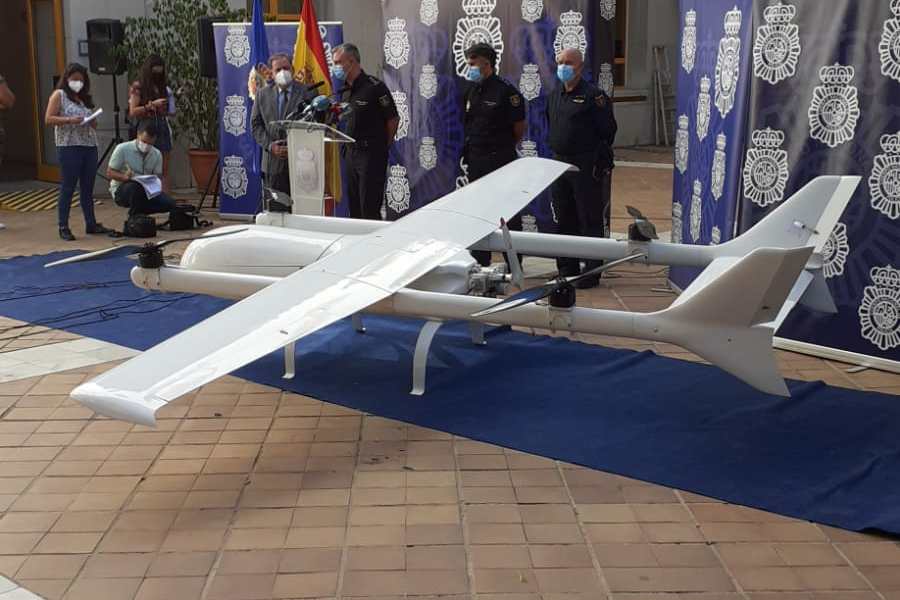A useful thing just turned up. Heat treating at home.


A useful thing just turned up. Heat treating at home.

UK postal service dream of serving remote locations with drones that can move 100 kg 1000km.
Their first versions are driven by Briggs and Stratton Vanguard twin 38 cui lawn mover engines and we all can think of better ways.
UK Flying Post Angels will need plus 200 engines per year if these can be low mass,reliable and frugal.
[URL="https://www.dieselprogress.com/news/Vanguard-powered-UAVs-bring-aid-from-above/8013169.article"]
An inverted single cylinder two stroke direct drive with exhaust valves as a Honda Cub (More than 100 millions made)
will be better for making 30 horsepower at 60 rps.
76 mm bore and stroke 112mm.
More words and maybe a working link can be seen here
https://www.homebuiltairplanes.com/f...p.36052/page-5
https://drive.google.com/drive/folde...XM_g0HQ9pOxbmv
https://windracers.org/

A know it all ESE user can do valuable deeds for humanity etc.
Tuned exhaust pipes as we know them does a good job of converting blowdown kinetic energy to suck and blow back.
The blowback is not needed in this aero aplication as a MEP of 7.5 bar will do and exhaust closing timing is done by camshaft.
How long aproximately shall pipe be?
My beloved MZ301 had a pipe of ca 1.2m length and came on at cirka 50 rps (3000rpm)
Seems like you are talking about a two stroke uniflow, to my knowledge the honda cub engine is not one of those. How long a diffuser only, pipe shold be? Of course all the usual input: rpm, ex open etc is required.

Different wording for another fellow scandinavian
"with a cylinder head like a Honda Cub with two exhaust valves "
I really have not the faintest idea of best timing and asume that a clever guy with a good programe can optimize timing and pipe simultaineously
Input parameters are ca 76 mm bore,112mm stroke, 30 horsepower and 60 rps.
Ok, I understand now. Someone probably could do that, just prepare for a less than significant increase in power, because the poppet valves don't give nearly as high wave amplitude as an ex port, and there is only the expansion wave doing work.

I like the altruistic agenda, and it doesn't seem unrealistic for it to work.


Haha, popet valves are for toilets.


They are already working, and more than 100 Kg, I am not sure but I think I have seen some, since their fuselage is different from that of light aircraft (the double rudder is not usually common in common light aircraft)
https://dronedj.com/2021/07/14/franc...ansport-drugs/
https://english.elpais.com/spain/202...m-morocco.html






guys let me ask something about the divider between main exh and secondary on a cylinder with iron liner. 1mm wide should be fine i think but what about .75mm. the liner is thick so it should be strong enough just to keep the ring in the groove. it might wear down faster but i dont care
Depends how close to 70% the main port is.
At this width the ring absolutely does bulge out into the port , and the bridges are heavily point loaded when pushing the ring back into the groove.
Having an oil hole drilled thru the piston directly over the bridge will help , just as it does for T port bridge wear issues.
Ive got a thing thats unique and new.To prove it I'll have the last laugh on you.Cause instead of one head I got two.And you know two heads are better than one.






its slightly under 70% if i recall. i may put a bit of arc on the roof to be safe. when i was punching the new windows into the liner i fucked up and grinded the secondaries closer to the main than i wanted. to some what match the liner to the main its going to leave a thin divider of 1mm or so

I had issues with a 1-2mm wide iron bridge between aux and main before. This was an application where I had to make the aux tight to the main because of stud bore constraints. It overheated the bridge. I did not have oil holes drilled.
There are currently 47 users browsing this thread. (0 members and 47 guests)
Bookmarks